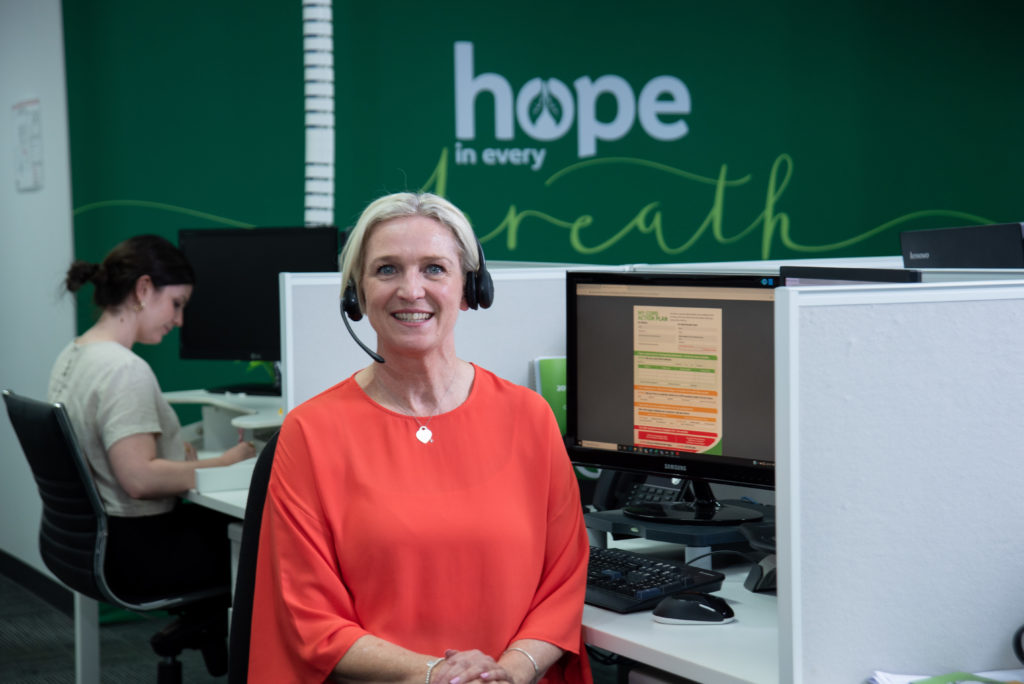Experiencing breathlessness can be one of the most common, and confronting, challenges for those living with a lung disease. Naturally, breathlessness can be uncomfortable and tiring but also frightening. However, breathing exercises and relaxation techniques can help you feel more comfortable and confident on those challenging days.
The cool draft of air from a hand-held fan may help control breathlessness. Lung Foundation Australia Respiratory Care Nurse, Amanda, said a hand-held fan was both cheap and easily portable.
“A freestanding or desktop fan, or the breeze through an open door or window, may also help. Some people find that a cool washer or a mist of water on the face has the same effect,” Amanda said.
Your doctor may prescribe medications that require you to use an inhaler device. It is important to use these properly or you may not get the most out of your medications. To assist, Lung Foundation Australia has a suite of inhaler device technique videos plus a range of other free resources and information to support you.
Different inhalers may need slightly different techniques. If you have been prescribed a new inhaler or your medications have changed, be sure to ask your doctor to show you how to use it correctly. Even If you’ve been using an inhaler device for a long while, it is important not to start taking shortcuts. Your inhaler will only be effective if you use it correctly, so if need, ask your doctor, nurse or pharmacist for a refresher and make sure they review your technique at least once a year.
It is also important to be aware of the potential need to slow down and to allow enough time to get tasks done.

Lung Foundation Australia Respiratory Care Nurse, Amanda, said as breathlessness can feel overwhelming, it is important to concentrate on relaxing muscles and slowing breathing.
“It’s normal to feel panicked, which amplifies the feelings of breathlessness,” she said.
“When you feel worried, anxious or uptight, you use a greater amount of energy which can leave you feeling fatigued. Stress may also change your breathing patterns, causing shallow breathing from the chest. You might find you breathe with your upper chest and use extra muscles around your chest and shoulders, leading to tension.”
Amanda recommends focusing on your breath; if you are experiencing breathlessness and feel concerned, breathe in slowly through your nose, deep into your diaphragm, and try using pursed lips as you breathe out. Breathing out should take longer than breathing in, and you should relax your shoulders as you breathe out.
A respiratory physiotherapist can build on these techniques to help you restore your energy through programs such as pulmonary rehabilitation.
“Your feelings of breathlessness may increase with different levels of activity, so it’s important to learn how to adapt and control your breathing, depending on the circumstances,” Amanda said.
Lung Foundation Australia also has an at-home, online Maintaining Movement video series that features our qualified exercise physiologist. For more information about breathlessness, pulmonary rehabilitation or to purchase a hand-held fan, freecall 1800 654 301.

Respiratory Care Nurse
Our free and confidential Respiratory Care Nurse telephone service is available for people living with a chronic lung condition such as bronchiectasis. This telephone service offers three telephone appointments with our skilled nurse over a 4 to 6 month period. The service aims to provide you with evidence-based information and support to help you self-manage your condition.

